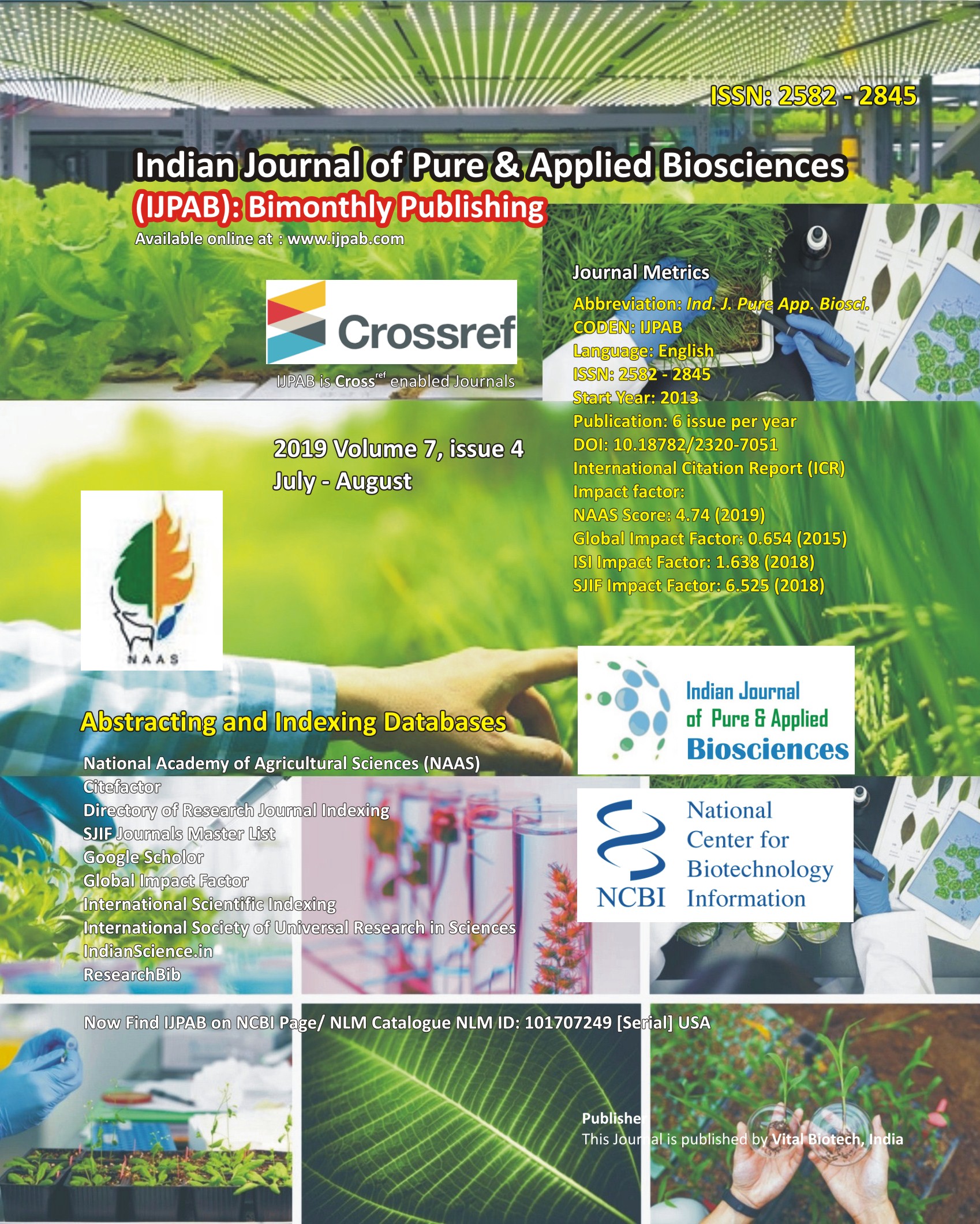
-
No. 772, Basant Vihar, Kota
Rajasthan-324009 India
-
Call Us On
+91 9784677044
-
Mail Us @
editor@ijpab.com
Indian Journal of Pure & Applied Biosciences (IJPAB)
Year : 2019, Volume : 7, Issue : 4
First page : (288) Last page : (297)
Article doi: : http://dx.doi.org/10.18782/2320-7051.7609
Beverage Consumption Pattern and its Contribution to the Total Nutrient Intake of Adolescent Boys
Taranpreet Kaur1*, Kiran Grover2 and Pooja Bhatt2
1Dietitian, 2Senior Extension Specialist, 2Ph.D Scholar,
1Orison Super Specialty Hospital, Ludhiana
2Department of Food and Nutrition, College of Community Science, Punjab Agricultural University,
Ludhiana, Punjab, India
*Corresponding Author E-mail: taranpreet0315@gmail.com
Received: 1.07.2019 | Revised: 11.08.2019 | Accepted: 17.08.2019
ABSTRACT
A sample of 120 rural and urban adolescent boys in the age group of 16-18 years was randomly selected from four schools of Ludhiana district of Punjab,India. The data related to general information, beverage intake and dietary intakes were collected by pre-tested questionnaire to study the consumption pattern of beverages and its nutrition contribution to total nutrient intake among adolescent boys. The findings revealed that the frequency of soft drinks, energy drinks and alcoholic beverages was higher among urban adolescent boys while frequency of traditional beverages like milk, buttermilk was higher among rural adolescent boys. A low intake of cereals, pulses, roots and tubers, green leafy vegetables, other vegetables, milk and milk products, fruits and fats was observed among both rural and urban adolescent boys. But significant (p≤0.01) higher intake of sugar was observed among urban adolescent boys due to high intake of soft drinks. From beverages, the percent contribution of calcium, energy, protein and iron among rural adolescent boys was 76, 23, 34 and 6 while among urban adolescent boys was 67, 19, 28 and 7. The data on percent adequacy of nutrient intake revealed that intake of energy, protein, fat, iron, magnesium and fibre was low. A significantly (p≤0.01) higher consumption of milk and milk products was observed among rural adolescent boys that contributed to higher intake of protein and calcium in their diet.
Keywords: Adolescent boys, Beverage frequency, Dietary intake, Nutrient contribution, Nutrient intake.
Full Text : PDF; Journal doi : http://dx.doi.org/10.18782
Cite this article: Kaur, T., Grover, K., & Bhatt, P. (2019). Beverage Consumption Pattern and its Contribution to the Total Nutrient Intake of Adolescent Boys, Ind. J. Pure App. Biosci. 7(4), 288-297. doi: http://dx.doi.org/10.18782/2320-7051.7609

